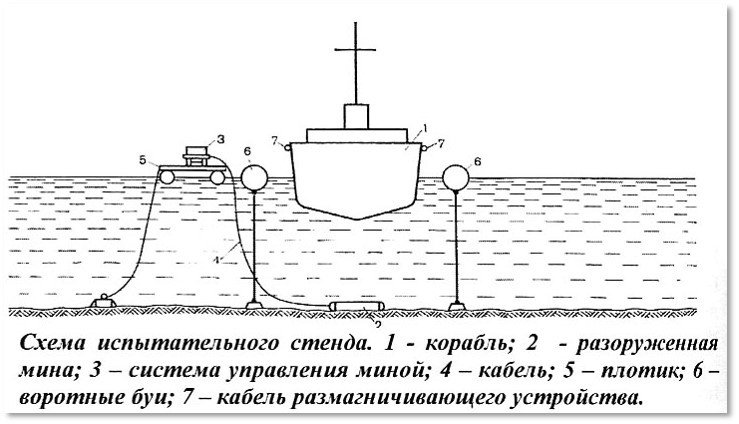Every year in February, Russia celebrates Defender of the Fatherland Day. We wish a peaceful sky over the heads of the military, doctors, WWII veterans, we remember the people who defended the country from the enemies in difficult years. But we must not forget about scientists and engineers who improved existing and created new means of protection against enemy attacks. Read about one of the main developments for the USSR Navy – the LPTI system – in our article.
The Ioffe Physical-Technical Institute of the Russian Academy of Sciences was founded in 1918 in Saint Petersburg, the maritime and academic capital. Today it is the largest center of fundamental academic science, combining research in the field of physics and technical developments. During WWII, the staff of the Institute made a huge contribution to the development of the Navy.
The initiative to create the institute belongs to prominent Russian scientists. One of them was Abram Fedorovich Ioffe, who became the first director of the Physical-Technical Institute. The name of the organization symbolized the fruitful union of fundamental science and technical development of the country.
One of the first “naval” directions at the Institute was the creation of a magnetometer. And the beginning of work on demagnetization dates to 1936. One of the heads of the PTI laboratory, physicist, and future president of the USSR Academy of Sciences Anatoly Petrovich Alexandrov recalled: “One day in 1936, Academician Ioffe and four sailors came into our laboratory. Among them were I. S. Isakov, Commander of the Baltic Fleet, and Head of the NIMTI A. E. Brykin. Isakov said that it was decided to revive the powerful Navy, including cruisers and battleships. He was pleasantly surprised to learn that we were pretty well aware of the situation in the Baltic and the Black Sea fleets. This was the result of our research with cutters, which was carried out in both fleets… we were given the task to develop a system for protecting ships from magnetic mines and torpedoes within 5 years (this is the approximate construction period of the battleship).”
Ioffe gave Anatoly Petrovich a week to think about it. And the staff of Alexandrov’s laboratory immediately got to work to answer the question of whether it’s possible to solve the task in principle…
The creation of demagnetization systems occupied a prominent place among other works of the Institute. However, these were not the only developments on defense topics. For example, in 1940, at the height of research on the demagnetization system, the direction of mine protection, anti-submarine antenna network, improvement of mines and torpedoes was developing. And even before the start of the war, PTI staff developed areas of defense significance in anti-submarine acoustics, “traceless” movement of torpedoes, radar detection of targets, non-contact fuses, various methods of detecting submarines.
Already in April 1940, Alexandrov made a report on the method of demagnetization of ships developed at LPTI. And although at first the proposed method was rather sharply criticized, by the end of 1940 the tests of the LPTI system showed the effectiveness of protecting ships of the surface fleet.
The initial criticism was due, among other things, to the fact that the leadership of the Navy did not have a common opinion on the principles of ship protection. However, experiments confirmed the effectiveness of the technology created by physicists. According to Alexandrov’s memoirs, it was assumed that the magnetic fuse of the mine could not have high sensitivity, since the Earth’s magnetic field varies quite significantly from place to place, and its fluctuations often reach 10-20 mE (millioersted). (Oersted is a unit of measurement of magnetic field strength. – SR). Obviously, the mine should not explode from fluctuations within these limits. “In other words, the field compensation problem should not be solved precisely, the accuracy of the order of 10 mE would be quite satisfactory,” Alexandrov said. Thanks to the research, the physicists not only created an LPTI magnetometer but also conducted experiments on the model and in the docks. This is how an effective demagnetization system appeared. The essence of the method was that the magnetic field of the ship was compensated by a system of three mutually perpendicular windings superimposed on the ship, through which direct currents of certain directions and magnitudes were passed. And they were regulated using a system of magnetometers installed on the ship.
Diagram of the test bench. For submarines and small ships, a “non-winding” method was used based on repeated remagnetization of the hull. After a few months, the procedure was repeated
Meanwhile, by the beginning of WWII, only one large ship was equipped with a demagnetization system – the battleship Marat, the flagship of the Red Banner Baltic Fleet. Therefore, from the very first days of the war, the selfless efforts of the developers and the sailors themselves were required. All forces were thrown into equipping more than 50 ships of the mentioned fleet with the LPTI system. The work was done in a matter of weeks, which soon played an important role during the evacuation of Tallinn – one of the largest fleet operations. During the passage of the squadron of ships from Tallinn to Kronstadt, 53 ships were lost. But those vessels that were equipped by the physicists with the LPTI system the day before reached without losses.
And already in August 1941, the main warships in all active fleets and flotillas were protected from enemy magnetic mines. During the war, none of the ships with the operating LPTI system were blown up by magnetic mines.
Over time, the sensitivity of magnetic circuit breakers increased. The enemy improved and created new mines to combat the already demagnetized Soviet ships. According to scientists, the sensitivity of these mines was 10 times higher than the previous one. And this required LPTI employees to improve demagnetizing devices. LPTI scientists began to study in detail the magnetic fields of ships, their course changes. Later they created course windings with manual or automatic regulation of currents.
Work on improving demagnetization systems was carried out in LPTI until the end of hostilities. Ships and small vessels protected by the LPTI system solved combat tasks to the bitter end, and the lives of many sailors were saved. Russian scientists demonstrated true patriotism and forever inscribed in history the triumphant union of physics and the navy.
Science for victory. Production of the studio "A'REAL". 2011. Source: The Ioffe Institute
Photo on the main page: История.рф, Севастопольский морской завод
Links:
Dyakov B. B. About the creators of the mine protection system of ships at the Physical-Technical Institute
Zabrodsky A. G. Contribution of scientists to the Great Victory on the example of the LPTI






















